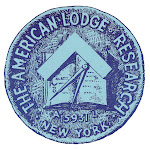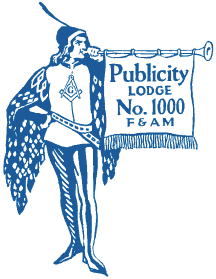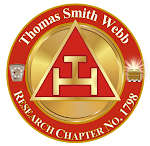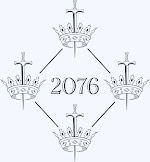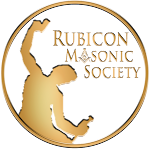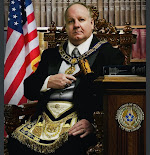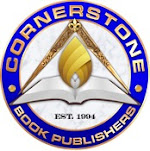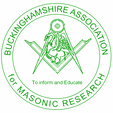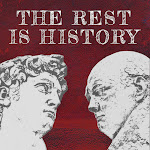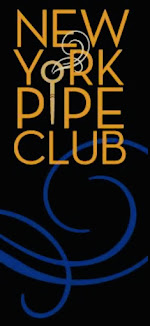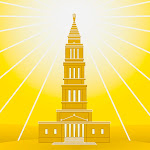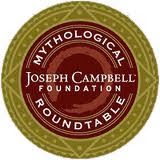The sad news seems to have eluded cyberspace for a week, but now newspapers in England are reporting the death last Tuesday of The Rev. Neville Barker Cryer, a most distinguished brother who shared his understanding of the works of the spirit in his insightful and prolific writing and lecturing on matters Masonic.
 |
| Courtesy PGL of East Lancs |
Both The Times (of London) and The Press (York) published the following obituary today:
CRYER The Reverend Neville Barker, after a period of illness, died 2nd July 2013 at York Hospital. Remembered and loved by Marjorie his wife, and all his family. Funeral Service at St Mary’s Church, Haxby, York on Monday 15th July 2013 at 11am. Family flowers only please, donations in memoriam to Manormead Care Home (Dementia Care Unit) and to Bible Society. All enquiries please to J. Rymer Funeral Directors. Tel: 01904 624320.
Bro. Cryer, to mention a few highlights, was a member of York Lodge No. 236, the oldest lodge in York; a Past Grand Chaplain, the Prestonian Lecturer in 1974, Batham Lecturer in 1996-98, and a Past Master of Quatuor Coronati Lodge No. 2076.
I will share only one Freemasonry Today column by Cryer, from about two and a half years ago, addressing the meaning of charity.
Some thirty years ago I began to realize that those who were called upon to present a toast to the Initiate, or to present or respond to the toast to the guests, were frequently using a phrase that must have seemed to be a most satisfactory one at that point. The phrase was: ‘That’s what Freemasonry is all about, isn’t it?’
In another context, and as a clergyman, I can just imagine a fellow cleric banging a pulpit ledge and in an attempt to silence all disagreement saying loudly, ‘That is what Christianity is all about, isn’t it?’
At the dinner table I can see the speaker now, warming up to his chance to impress the new Candidate sitting beside the Master and reminding him of what he earlier experienced in the north-east corner of the lodge room. Wanting to drive home the useful and correct need for a spirit of benevolence and care for others he works himself up to the climax of his speech and says: ‘Now Charity, that is what Freemasonry is all about, isn’t it?’ The speaker may sit down feeling that it is a job well done. But is it?
Forgive me if thirty years later I still have to point out that that is not what Freemasonry is all about. A person joining the Craft today might, of course, be forgiven for gaining the idea that it was.
A lot of provincial magazines that I see give me the sense that this is indeed the primary and overwhelming concern of the Craft. Yet how can it be? If it were, then we don’t practice what we claim.
Surely if that were true then why do we spend so much on maintaining halls, buying regalia, jewels and even books, having substantial meals, entertaining our guests and, forgive me perhaps for mentioning it, paying Grand Lodge and Provincial Grand Lodge dues. We do all these things because they too are important and, we believe, worth supporting. Benevolence has to be seen as part and parcel of this whole Masonic program in which we take part but to make the claim and try to drive home that claim with our newest members is untrue and unfair.
Of course it is right, and not the least when Christmas with its emphasis on giving is part of our national heritage, to appeal to a Freemason to show generosity to any who are so much less fortunate than ourselves – as we should remind ourselves every time we dine at home as well as at a lodge meeting. As I am sure the public are now much more aware we seek to share our giving for charity with many more than just our own members though they should be our first care.
Anyone reading this magazine, and I am sure you leave it around for the family and friends to see, can have no doubt about the range of our concern. Great as the range is, however, and generous as is the support that it represents, there are some things that I believe we need to think about afresh.
I am fully aware that what is written in the Volume of Sacred Law is not these days regarded by people at large with the same respect as was previously the case but it is still open for our contemplation at every lodge meeting. At one point it states this: ‘So when you give to the needy do not announce it with trumpets to be honored by men. But when you give to the needy do not let your left hand know what your right hand is doing so that your giving may be in secret.’ Much as I appreciate the desire we have had to be more open about what we do could it be that we are blowing our own trumpets a little too much? I think this matter does need some further thought.
There is something else that I think should concern us and is increasingly troubling me. I read in the first of the Emulation Lectures: ‘From him who is in want, let us not withhold a liberal hand. So shall a heartfelt satisfaction reward our labors, and the produce of love and Charity will most assuredly follow.’
What, I wonder, is happening to us when our charity collection in the lodge meeting is sometimes half, a third, or even a quarter of what is raised by a raffle? Why do we need another kind of ‘spirit’ than generosity to enable us to support those who are in genuine need?
What about the heartfelt satisfaction that should reward our giving or are we, as Free and Accepted Masons, only the same as most other folk and these words are just meaningless ritual? It has made me clear as to what I must do in future.
The ranks of Freemasonry Today staff have dwindled too suddenly and too soon. Editor Michael Baigent passed just last month.





